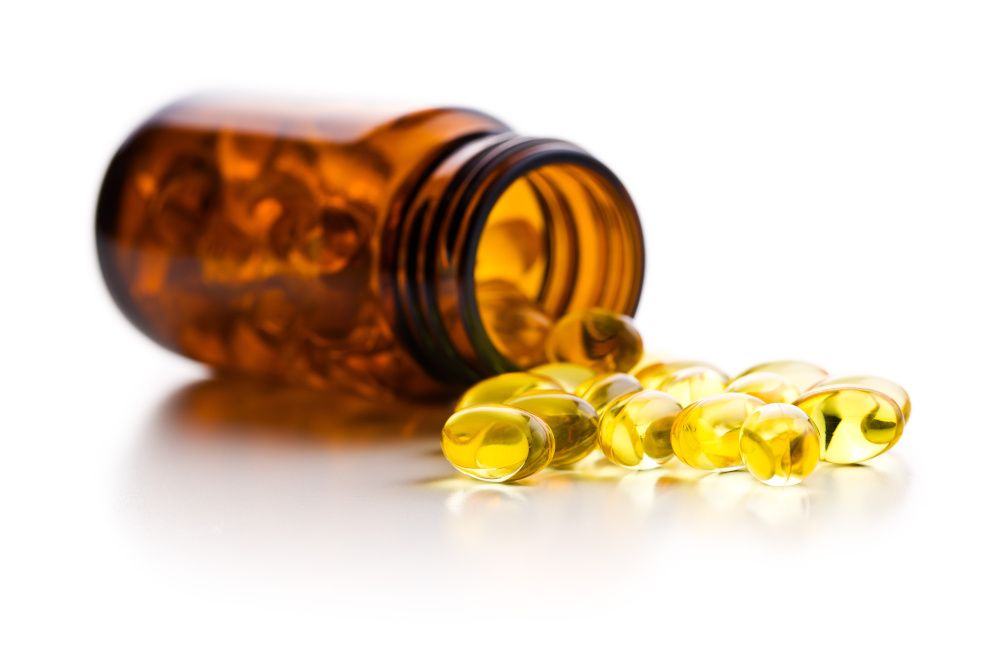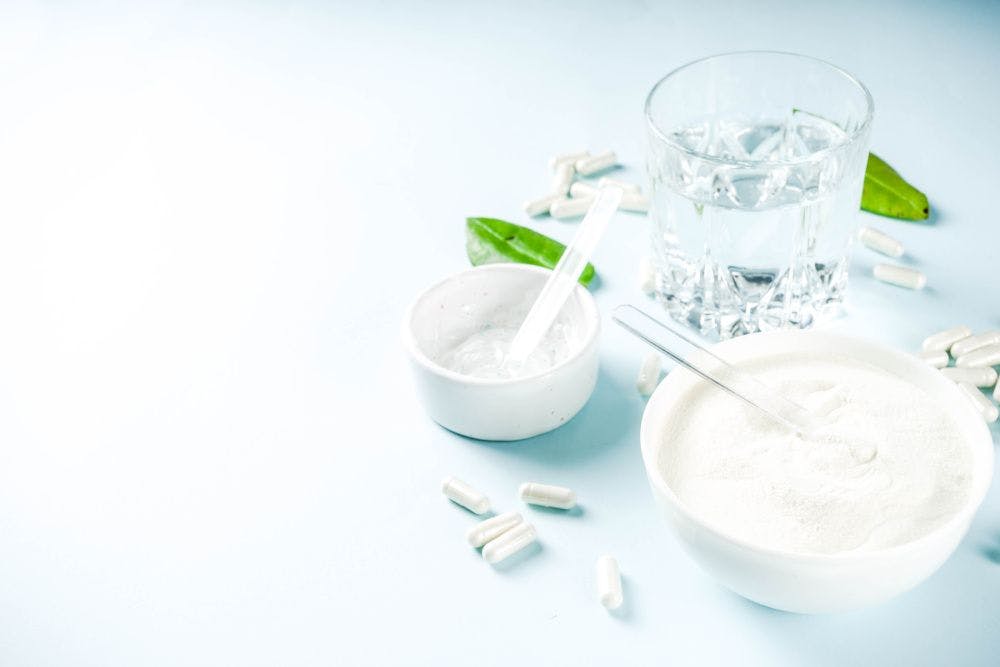Diving Deep: Omega-3 ingredient exploration unlocks a new world of benefits
The entire omega-3 space is bubbling with innovation as investigations grow into unanticipated health effects, “new” omega-3s, and a widening role for plant-based sources.
Photo © Jiri Hera - Stock.adobe.com

If any historians are already drafting their accounts of the pandemic’s effect on supplement sales, it’s unlikely they’ll give omega-3 fatty acids the same coverage they will higher-profile immune boosters like vitamins C, D, and E, and zinc.
So it’s probably a good thing that historians aren’t yet writing that final analysis, as unfolding evidence continues to paint omega-3s as potentially powerful mediators of inflammation and the immune response in their own right.
In fact, the entire omega-3 space is bubbling with ferment as investigations into unanticipated health effects, “new” omega-3s, and a widening role for plant-based sources proceed—reminding consumers and industry alike that these fatty acids deserve a spot in the history books.
Roller Coaster
Ellen Schutt, executive director, Global Organization for EPA and DHA Omega-3s (GOED; Salt Lake City, UT), describes omega-3 sales at the height of 2020’s pandemonium as “a roller coaster,” with the ride stabilizing only by the year’s fourth quarter and the category’s overall take benefiting mightily from online purchases—a trend that “we expect to continue,” she says.
Fortunately, the omega-3 market entered lockdown in a position of strength, adds Nena Dockery, scientific and regulatory affairs manager, Stratum Nutrition (Carthage, MO), and remained there throughout its progress, thanks to growing awareness that nutritional interventions “might either help prevent infection with the SARS-CoV-2 virus or offset some of the devastating symptoms of the disease,” she says.
Countering COVID
And while omega-3s haven’t historically played a large part in such immune-support interventions, “Multiple research studies have investigated their role, either alone or in conjunction with other ingredients, on inflammation’s link to immunity,” Dockery says.
But that’s not their only possible role relative to COVID. Limited research suggests that omega-3s might fight viruses by inhibiting their replication, or by changing the fatty-acid composition of the cell’s lipid-bilayer membrane to prevent viral entry into cells, Dockery says.1
And in January, scientists at Cedars Sinai Medical Center in Los Angeles gained fast-track publication of research showing that patients with an omega-3 index (O3I)—a measure of the amount of EPA and DHA in the blood—above 5.7% were as much as four times less likely to die of the disease than were patients in the lowest quartile.2
“These studies set a good starting place for conducting more extensive research to determine a potential clinical benefit from supplementation,” Dockery says. “In the meantime, research, along with accompanying marketing, has helped sell products—lots of them—despite production and shipping being hampered. As a result, the omega-3 market is expected to grow at a CAGR of 6.6% from 2020 to 2027.”3
Long Way to Go
Yet analyses of NHANES data show that American adults still consume roughly 100 mg of combined EPA plus DHA per day4—well below the daily 250 to 500 mg that the 2010 Dietary Guidelines for Americans recommend. Toddler and teenage consumption appears even lower.5
Blame lies with the typical Western diet, which Dockery describes as “greatly deficient in omega-3s and critically imbalanced in the ratio of omega-3 to omega-6 fatty acids—mainly because of heavy consumption of short-chain linoleic acid, or LA.”
To wit, while a healthy diet might comprise an omega-3-to-omega-6 ratio somewhere between 1:2 and 1:4, “most Westerners consume ratios of 1:10 up to 1:50 through overconsumption of highly processed foods,” Dockery says. “And though omega-3 supplements can improve this ratio, we still have a long way to go.”
Playing the Long Game
Supplement formulations usually carry their payload in the form of long-chain EPA and DHA, often from marine sources.
Why? As Dockery explains, “It’s been 50 years since publication of a landmark population study uncovering the link between fish consumption and reduced risk for cardiovascular disease set in motion concentrated research on EPA and DHA and the subsequent intense marketing of these two omega-3s. As a result, EPA and DHA became the omega-3s that consumers associate with health benefits.”
And not without reason. “EPA and DHA omega-3s are in every cell of the body and are known to be good for the heart, brain, and eyes and during pregnancy,” Schutt says. Thus, we see them in prenatal and infant formulas to help prevent preterm births and promote neonatal brain development, in cardiovascular-support supplements for healthy blood lipid levels, in eye-health formulations—even in products for mental and mood wellness.
Indeed, says Greg Lindsey, CEO, Wiley’s Finest (Coshocton, OH), “The pandemic helped increase awareness of the mental-health need for EPA and DHA. Clinical work on omega-3s and mental-health issues like depression has emerged as more important than ever. Many people aren’t aware that the American Psychiatric Association recommends fish and fish oil to support mental health.”
Something Special
But among the buzziest fields of omega-3 research right now involves not EPA and DHA themselves, but products of their metabolism known as special pro-resolving mediators (SPMs).
SPMs appear to actively target and help resolve inflammation, producing downstream effects that may touch on conditions ranging from COVID, lung injury, and sepsis to cancer, cardiovascular disease, and pain.6
SPMs are also opening a window onto how the body heals after injury. “Or said another way,” Lindsey states, “they’re helping us understand how homeostasis—that is, returning to health and recovery—works in the body. And that’s exciting.”
Beyond EPA+DHA
Just as exciting is what scientists are learning about omega-3s beyond EPA and DHA. As Greg Cumberford, vice president, science and regulatory, Nature’s Crops International (Winston-Salem, NC), explains, “Emerging science is showing how lesser-studied omega-3s support cell membranes, signaling functions, and anti-inflammatory activities in their own right, and that taking in high preformed DHA alone may inhibit or short-circuit metabolic activity from these precursor omega-3s.”
In fact, supplementing solely with EPA and DHA bypasses several intermediate fatty acids with health benefits, including SDA (stearidonic acid), ETA (eicosatetraenoic acid), and DPA (docosapentaenoic acid). And though our bodies can construct these intermediates via ALA metabolism, the first step in that construction requires an enzyme in which many of us are deficient, Dockery says, thanks to factors ranging from smoking, pharmaceuticals, and chronic diseases to plain-old aging.
As for benefits, SDA is “gaining recognition for anti-inflammatory and cell-signaling functions similar to DHA,” Cumberford says. “And along with ALA and ETA, it may help drive better fluid intelligence and structural brain integrity in healthy seniors.” Meanwhile, ETA, which readily metabolizes from SDA, yields anti-inflammatory metabolites similar to those associated with EPA and DHA, he says.
Derek Tobin, business development and clinical science manager, Epax (Norway), notes that the company received a Norwegian Research Council grant worth more than $900,000 to study the potential of newly discovered fatty acids on health. “The aim is to help conduct further studies in manufacturing processes and biological research into the benefits of these new very-long-chain fatty acids in areas such as brain, eye, and skin health, and fertility,” he explains. “We’ve already begun collaborations with universities and research institutions, and that’s providing test materials for preclinical research, with clinical studies to take place at a later stage.”
Efficacy Without Fish
Oddly, fish oil contains no SDA and only low levels of ETA. “And though DPA is naturally present,” Dockery notes, “it’s often destroyed in the purification process that removes heavy metals and other contaminants.”
So consumers hoping to build up a reserve of these intermediaries might be wise to consider non-marine sources. But the challenge with non-marine sources, Dockery says—and particularly plant-based ones like flax, chia, and soybean—“has always been research support. Fish oil and its EPA and DPA content have been heavily marketed for years, and plant sources—with the exception of algae—don’t contain these long-chain fatty acids.”
But Cumberford and colleagues see things differently. “While literal reams of studies have looked at the relative bioavailability and efficacy of omega-3s, we’re coming from a more fundamental place: We’re challenging the accepted claim that dietary plant-based omega-3 ALA and SDA are somehow ‘inefficiently’ converted into the circulating long-chain DHA that the body and brain use in the first place,” he says.
After all, he argues, humans largely evolved eating plant-based diets, which gave them “far more balanced” omega-3-to-omega-6 intakes than we get now.
Moreover, while the conversion of ALA to DHA appears not to boost circulating DHA levels significantly, Cumberford cites new carbon-isotope ratio mass spectrometry data showing that dietary ALA and SDA actually do readily “turn over” to DHA. And this new data comes atop research showing that EPA naturally synthesized from plant-based omega-3s like ALA accounts for “significant amounts” of brain-tissue DHA, too, he says.
“So in our view,” Cumberford concludes, “not all omega-3s are created equal: EPA and DHA both have well-studied metabolites and important science linking increased consumption to health and longevity. But they’re not physiologically ‘essential.’ We can readily and efficiently synthesize them as and when needed from truly ‘essential’ plant-based ALA and from more-advanced SDA.”
The New Plant-Source in Town
It’s a mildly revolutionary notion that’s already influencing formulations.
For example, when Wiley’s Finest was designing its non-marine CatchFree Omega line, Lindsey recalls, the company settled on a formulation combining algal DHA with ahiflower oil, a plant source of multiple omega fatty acids—including plenty of SDA—partly because the body more readily converts ahiflower’s SDA to EPA than it does ALA.
“We call it a shortcut to more EPA, giving the body the most EPA it can get from a plant source,” Lindsey says.
And ahiflower oil isn’t just about omega-3s. “Ahiflower oil is an excellent standalone omega-3-6-9 supplement,” says Andrew Hebard, Nature’s Crops’ CEO. “It’s the most complete and balanced ‘multi-omega’ while also offering a clean taste and aroma rare in the omega category.”
No wonder the company expects to see ahiflower oil appearing in a number of foods and beverages in the coming years, “providing a plant-based, full-spectrum omega boost in meal-replacement powders, vegan milk alternatives, and spreads,” Hebard says.
Truly Sustainable
Even better, plant-based omega sources like ahiflower boast the impressive sustainability credentials that consumers, especially younger ones, care about.
Those younger consumers “are more prone to weighing their eco-social opinions when making purchases,” Lindsey claims—giving brands that formulate with plant-based omega-3 sources “the ability to appeal to these new consumers and meet their demand in the omega-3 market.”
And sustainability goes beyond pleasing consumers. “Let’s remember,” Cumberford says, “that the vast majority of dietary EPA/DHA used in human nutrition comes from around 20 million metric tons of wild-harvested forage fish extracted from the oceans each year. If recommended EPA/DHA dietary intakes were met globally and predominantly through wild-harvested fishery catches, it would spell ecological disaster.”
Regeneratively farmed sources like ahiflower offer an alternative. “Each acre of ahiflower produces as much omega-rich oil as 320,000 anchovies,” Hebard says, “and provides growers opportunities to cultivate a profitable crop that uses minimal inputs, adds vital biodiversity to their rotations, and provides an enticing environment for pollinators.”
Marine sourcing can be mindful, too. According to Crawford Currie, head of medical R&D, Hofseth BioCare ASA (Alesund, Norway), pressures on wild fish stocks are putting the spotlight on sustainably farmed fish—like the salmon that Hofseth uses for its omega-3 products.
“We have total traceability from egg to fish,” Currie says, adding that Hofseth’s products bear a QR code to prove it. And while heavy-metal exposure is an inevitability with wild-caught fish, “the levels in our fish are many times below the maximum that Norwegian regulations allow,” he says, “and Norway has amongst the most stringent regulations globally.”
So there’s room for a variety of sources. And, as Dockery says, “There’s plenty of room for growth, too, particularly as the plant-based arena opens up. The main challenges will be consumer education surrounding the benefits of all omega-3s—not just EPA and DHA—and how best to supplement for optimal health benefits.”
References
- Hathaway D et al. “Omega 3 fatty acids and COVID-19: A comprehensive review.” Infection & Chemotherapy, vol. 52, no. 4 (December 2020): 478-495
- Press release. “Research Shows People with High Omega-3 Index Less Likely to Die from COVID-19.” Posted January 26, 2021.
- Press release. The Insight Partners report. “Omega-3 Concentrates Market to Reach US$ 2.70 Billion by 2027 with Impact of COVID-19 Pandemic.” Posted March 11, 2021.
- Cave C et al. “Omega-3 long-chain polyunsaturated fatty acids intake by ethnicity, income, and education level in the United States: NHANES 2003-2014.” Nutrients, vol. 12, no. 7 (July 2020): 2045
- Murphy RA et al. “Long-chain omega-3 fatty acid serum concentrations across life stages in the USA: An analysis of NHANES 2011-2012.” BMJ Open. Published online May 10, 2021.
- Gutiérrez S et al. “Effects of omega-3 fatty acids on immune cells.” International Journal of Molecular Sciences. Published online October 11, 2019.

Prinova acquires Aplinova to further increase its footprint in Latin America
April 7th 2025Prinova has recently announced the acquisition of Brazilian ingredients distributor Aplinova, which is a provider of specialty ingredients for a range of market segments that include food, beverage, supplements, and personal care.





















